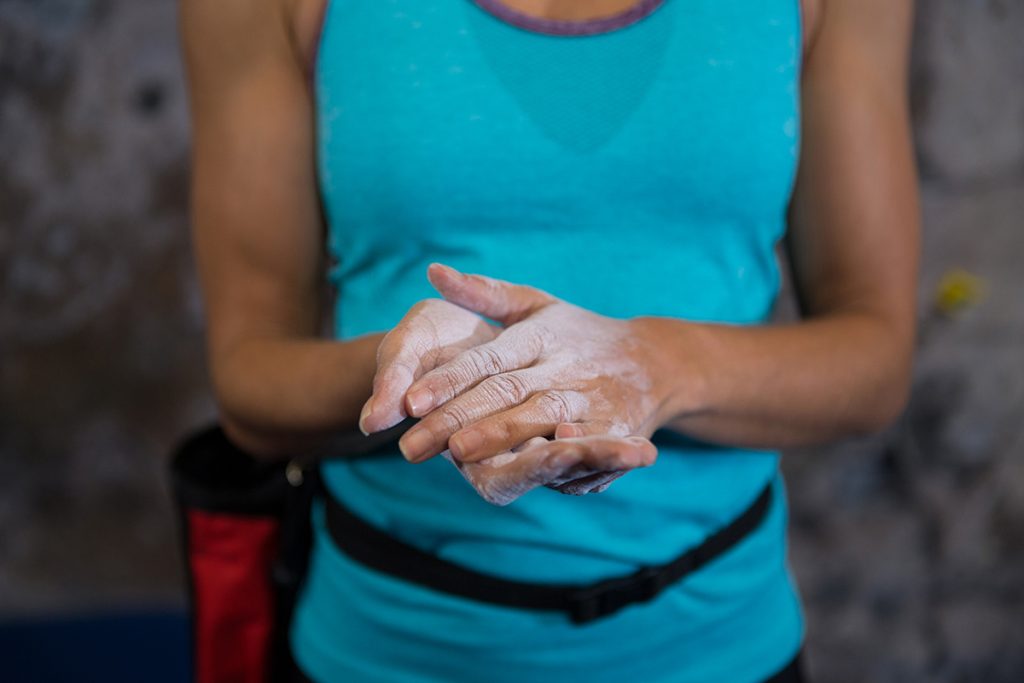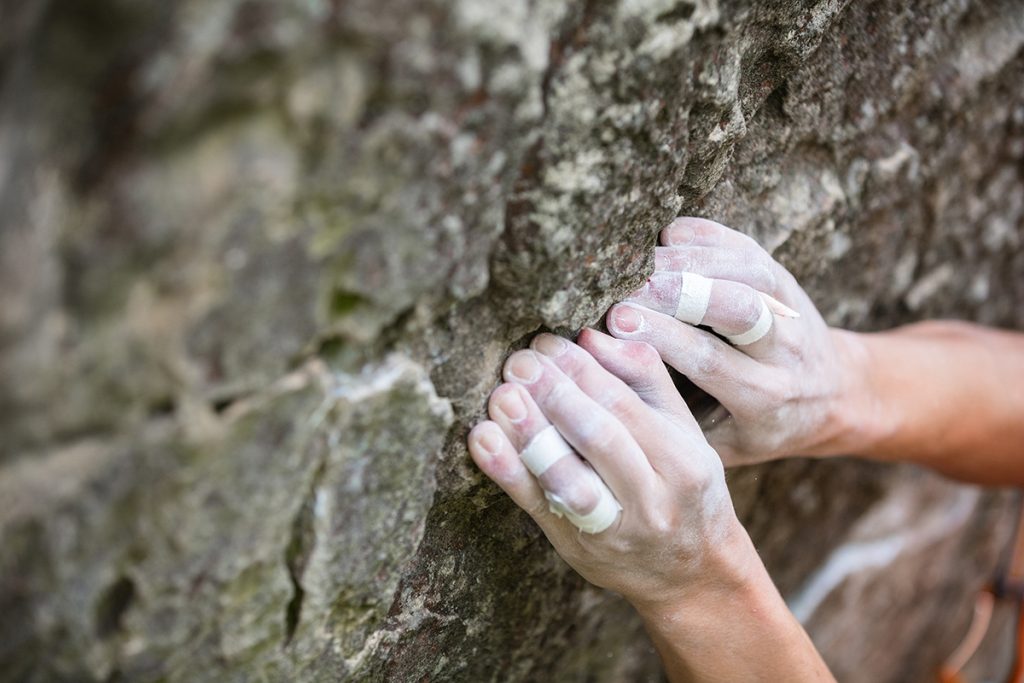Rock climbing requires caring for your hands’ skin, a form of self-care that is often overlooked! The largest organ, and the one that physically connects with rocks, can be forgotten by many climbers.
They’re so busy focusing on their one-arm pull-ups or deepest pistol squat that they don’t notice they neglect a vital aspect of rock climbing: skincare. They finally start doing something different when they rip a flapper, experience raw tips the day after a climbing session, or notice their hands are cracked and drier than Mars. Proper skincare could have prevented these issues, but it’s never too late to start!

There are a few small practices that you can implement in your post-climbing sessions that will go a long way. Everybody is different; you must learn more about your skin to keep it healthy. Follow along to learn how to take care of your skin for rock climbing, and keep sending. But don’t worry, you’ll still get to use it as a scapegoat if you really want to!
Post Climbing Session
A crucial time to care for your skin is immediately after a climbing session. This is when your hands are the most vulnerable and torn up and should receive extra attention. Do these next two steps after every session and notice your skin repairs itself quicker.
The Wash – To begin the repairing process, you must first rid your hands of every bit of chalk. Excess chalk will continue to dry out your hands on your commute home, leaving you with dry and cracked hands.
Scrub-a-dub-dub those digits until you’re sure you’ve rid yourself of the drying agents in chalk. If you’re climbing outside, take some excess water and scrub the best you can. It’s better to do a poor job here than no job.
Apply – Next, apply a salve or balm. Climbing salve speeds up the repair process of your damaged skin. You’re constantly ripping and stripping your skin as you climb. If you don’t take the necessary rest time, you’ll find your skin is sore the second you grab a hold at the beginning of a climbing session.
If all you want to do is climb, climb, climb, then using a type of climbing salve is essential for healthy skin. A popular brand to check out is Climbskin. Their hand cream is an excellent post-session choice. What’s also great about this product is that it’s also notorious for being sweat-preventative, so it can be used before a climbing session, too!
Callus Care
Like many climbers, you may proudly present your large calluses as bold badges of honor. Calluses are an ever-evolving part of your climbing and are how you can grab holds without pain. Soft skin tends to feel more intensely, making it harder to force yourself to pull hard.
As a seasoned climber who has built up their calluses, you may wonder how they could ever be a downfall. It’s pretty simple: the larger a callus = the easier it can rip. In comes the fearful flapper.
A flapper is when your skin rips and peels away from your hand or fingers and hangs on by what little skin still attaches to it. Wave your hand in the air, and you’ll understand where the term ‘flapper’ comes from.
Flappers occur when a callus is too large, a climber repeatedly tries a hard move for the skin (think of catching a swinging dyno), or when a climber doesn’t listen to their body and keeps climbing through the pain. To care for your calluses, file them down! All it takes is a file like this one from Lattice Training and a little effort. You won’t need to file your calluses daily; only when they’ve built enough, they protrude too much. Be sure to file only a little, though; you want to keep your hard work!
Climbing Tape

When you want to keep climbing, but your pesky skin has had enough, the courageous climbing tape does the job. Many brands make climbing tape, and they’re typically the same. You can easily tear it to different sizes and apply it to your skin when you’ve ripped a flapper or stripped your finger raw, but your stoke is still high.
A roll of this stuff will last a while and is best kept in your climbing bag, so you have it when you need it most!
Rest!
Many climbers have skin issues because they don’t give themselves enough time to heal. Many climbers don’t use salve and get by just fine; they’re not a dealbreaker to healthy skin. But suppose you’re pushing yourself frequently and ending each session with thrashed skin. In that case, you may need to reevaluate your time away from the wall.
Rest days don’t mean you must sit at home and do nothing, but you should give your body and skin a break from pulling hard on rocks and plastic!

Recent Comments